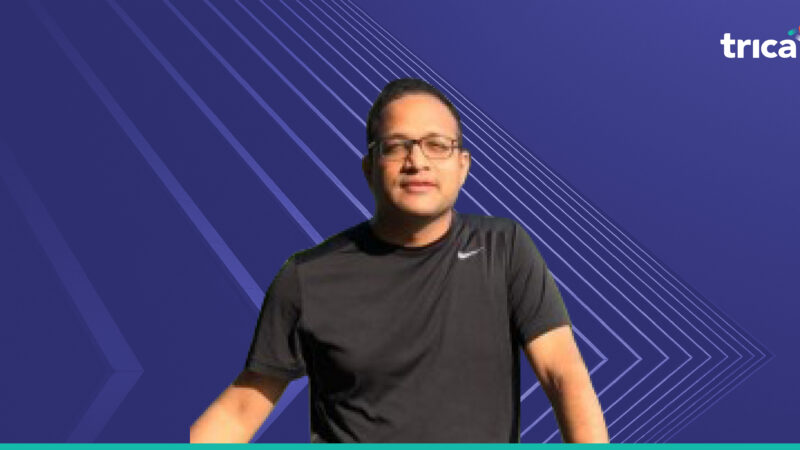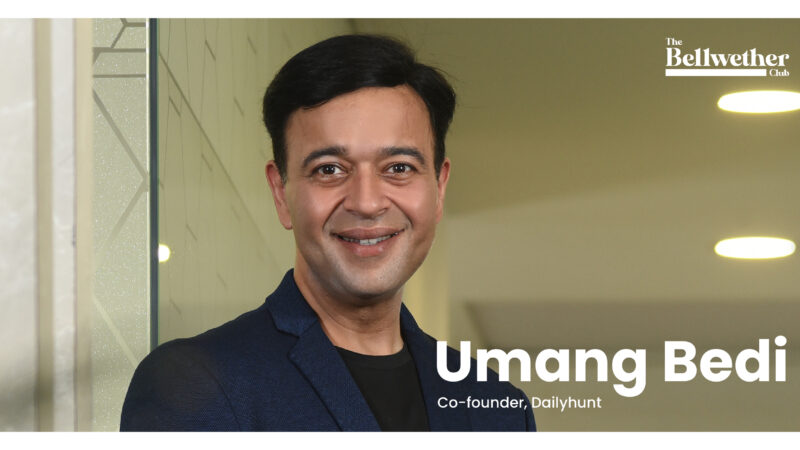
#LetsTalkESOP | Employees and Equity Generation
Jitendra Gupta is a serial entrepreneur in the fintech space. Having previously founded Citrus Pay (acquired by PayU) in 2012, he now heads Jupiter Money – a digital bank. As a two-time founder, Jitendra has clearly understood what it takes to build strong startup teams. Jiten says,
Jiten, therefore, believes that compensation should be a mix of cash and equity. He says, “Founders should try and find a balance between cash compensation and equity grants. They should understand that grants are meant as a bonus to early risk-takers & high contributors.”
In a recent event, Jupiter Money offered equity to employees in Stock Appreciation Rights (SARs). With SARs, an employee does not have to “purchase” the shares or “pay” the exercise price. You can think of SARs as a form of bonus compensation given to employees that is equal to the “appreciation” or increase in the price of the company stock over a certain time period. SARs are beneficial to the employee when the company stock price rises. In SARs programs, employees do not pay the exercise price but receive the sum of the increase in the stock price as either stock or cash or a combination of both. This sum is treated as a “prerequisite” received and taxed as salary income based on the employee’s tax slab.
Though SARs are slowly picking up momentum in India, Jitendra believes these grants can benefit employees.
Syna: Tell us a little bit about your story Jiten, in terms of your journey from Citrus Pay to Jupiter Money. What have been the highlights of your entrepreneurial journey in the fintech space, and what have been your biggest learnings?
Jiten: We started Citrus Pay in 2011 when virtually the startup ecosystem was non-existent, and it was very difficult to hire people for a company that was unknown. We started in the payment gateway space, which, after 2013-14, is known as fintech. Being there from the very beginning, we have seen a 180-degree change in the fintech space. Starting at a time where raising 1.5 – 2 million was a big deal, to now when raising seed money or the first check is much easier because there is so much interest.
I would say that one of the biggest learning has been onboarding team members and assessing them while doing so. Also, coming up with a reward philosophy and keeping employees engaged is another key learning. I believe that employees in a startup should have the autonomy of decision-making because only that will help them take a 360-degree experience across verticals and grow.
When startups hire team members, they hire for the immediate need and not for scale. What I have learned is, if your startup is doing well, you will realize that two things happen in a year or two – either your team will scale itself, or you start exploring a new team. I think that creates negativity in the organization. Hiring, according to me, should be done after identifying the skills that may be needed two or three years down the line.
Another learning is with respect to funding. Generally, fundraising is a very tedious and painful exercise, and it consumes a lot of mental bandwidth, which means founders tend to take their eyes off the business. So it’s better to plan the funding requirement and sometimes raise extra money if there is an option. Founders should rather do this than try to optimize for valuation or dilution. When we were raising money in my current venture, many people asked me, “Why are you raising so much when your business model doesn’t show the need for such an amount?” I was clear that “Yes, my business model does not have the requirement of consuming this amount for the next couple of years, but since I have the option, I want to redeem it as it will give me mental comfort to create a business which is long term and that too without any quarter pressure or making a compromise with hiring.” If you look at it in hindsight, it was a perfect decision because of the COVID situation, and the plan has changed for almost 6-7 months for everyone.
One more learning is with regard to compensation. Should it be a mix of cash and ESOP? I have often seen founders struggle to find the right balance between ESOPs and cash compensation. Sometimes they end up giving too many ESOPs; say, they gave away 4-6% equity to hire some people. Next, they realize that they don’t have a pool left, subsequently struggling to hire good talent later. Sometimes, in order to save his ESOPs, founders end up giving more cash which is a greater outflow. Also, the team member might not be vested enough in the success of the company in the long run.
S: One of the points you made was to try and get people on board that not only solve your immediate problems but those that will be able to grow and mature with you as the organization grows. What were the traits that you saw while building the Citrus Pay team? What are some of the filters or parameters that you use to make the right hire?
J: I think three things matter the most while we make any hiring decision. The first is to hire for passion rather than skill. Of course, there are a few technical rules where one has to hire for skill, but otherwise, I strictly go by the level of passion of the person per se.
The second which I pay huge attention to is references. So I never go by a candidate’s reference per se, but I try to find out the reference of an experienced candidate from previous peers or bosses. Nowadays, platforms like LinkedIn allow one to reach out to anyone and everywhere in the world. So I think it’s easier to get that reference, which plays a very important role.
The third factor is the real-life assignments given to a candidate. 50% of the candidates don’t do the assignment – they bail out. For me, this is a very good filter as it helps me figure out if or not the candidate is committed to the company or is not passionate enough about the sector.
S: There would be some hires or team members that might be coming from more established large corporate organizations and some from the startup ecosystem as well. How do the conversations around compensation and the rewards philosophy translate into one of the parameters by which you can understand if this person is going to gel within your organization or not?
J: We tend to give two options to the candidate. One is totally in the form of a cash component only, and the other is higher equity and less cash. The candidate’s choice gives us a clear signal of how long the candidate is looking forward to working with us. I am especially talking about the candidates who will be given a larger salary, say in the range of INR 40 LPA. If these candidates negotiate too much on the cash component, we garner a clear insight into their willingness to work with us for a longer run.
S: There are founders who believe that they want to create wealth across the organization, and that becomes a driver and motivator for them. On the other hand, there are others that feel that the wealth generation is okay but do not prioritize it. What is your own personal thinking around this? And, what is the rewards philosophy that you have now engineered at Jupiter Money?
J: I am a firm believer in rewarding people who take the risk. People who join early should get better rewards as they’re joining when there is no business and no revenue. Therefore, I think they inherently take a lot of risk in terms of joining a start-up. The philosophy which I see is that at Series A level, you should be okay exhausting 50% of your ESOP pool. That’s the thumb rule which I followed, and it has worked for me.
We, at Jupiter Money, haven’t hired anyone so far at a higher salary than what their previous organization was offering them. So we have people joining at the same salary or a reduced salary. Of course, there is a fair amount of visibility in terms of what we’re doing. People know our business model, and hence there was a fair amount of conviction in the team members who joined us. We do influence the cash form decisions accordingly, but we have adequately incentivized everyone who has joined us so far.
S: One of the challenges around giving out ESOPs could also be that sometimes you become over-generous early on, and then you don’t have enough for higher sets you need to make at a later stage. Give us a sense of your citrus experience, and maybe you can share some anecdotes with us in terms of how a situation like that could be corrected or what you could possibly do? Also, how open are investors actually contributing to the ESOP pool itself?
J: At the early stages, I’ve not really seen any VC diluting for an ESOP pool. It is mainly the founder who contributes to the pool, and I have done that in both the ventures – Citrus Pay and Jupiter Money. And if the founder is diluting to create the ESOP pool, then in my view, a VC has very little say on the allocation of stocks. Founders should map out their organization in terms of roles they will have to fill up and at what level. Then they can plan the next year’s business and manage the pool accordingly. This practice will help founders ensure that they don’t over-promise or go overboard. Of course, some exceptions can be made when it comes to hiring someone who is exceptional. But, overall, this is how you strike a balance between cash & equity grants.
S: Any particular reason as to why in Jupiter you consciously decided to use SARs over ESOPs? Is there any experience from the past that you can highlight that would help us understand why SARs might work better than ESOPs?
J: There are many reasons frankly why SARs might be better than ESOPs. One of the key reasons is the flexibility to cash out to employees. Generally, if you give actual stock, then you have to do the buy-back process, which is not only cumbersome from a legal and compliance perspective but also tax inefficient both for the company and the employee.
The second reason is ESOPs have huge tax implications on employees. An employee is required to pay tax on FMV and exercise price. Effectively, the employee receives no benefit but is paying the tax. With SARs, tax payment is not an issue.
The third reason is more from a regulatory standpoint and voting rights. Since we are into the financial services industry, voting rights have their own importance. We wanted to keep voting rights with us because it was a holding given by the founder to employees. From a regulatory standpoint, I got to maintain certain voting rights through SARs.
In a stock appreciation, none of these challenges exist. You can simply, subject to investor consent, cash out to employees, or you can actually issue shares later if you want to. The tax implication comes only at the time of issuance of shares. In my point of view, it is really a very flexible scheme, and you can keep the options pending as long as there’s no liquidity event.
S: What would you recommend to a reasonably mid-sized company which is only now starting its ESOP plan? Suppose there are a large number of employees in an organization and they are at very low salary levels; what should be done?
J: If the mid-sized company has a large sales team, it might be difficult to allocate stocks to all. One should also consider the fact that the sales team generally doesn’t value stocks; rather, they value cash bonuses & incentives more. For a mid-sized company, the founder should consider giving cash incentives and restrict equity to the key people.
S: How long do you keep the price or the exercise price of the auction low, and at what point do you start pegging it or resetting it to the last valuation or a higher price? For example, at a Series B level, would you still institute the exercise price at the seed level?
J: It’s a very individual call, frankly. In Citrus, the exercise price was set at a nominal value until the Series B level. That being said, at Jupiter, we decided that till the value has been created in terms of certain business metrics, we will keep the exercise price at zero value or the nominal value; but post that, we will give it out at the last valuation.
S: In regards to vesting, it is mandatory to have a one-year cliff in India. For a very long time, people have incorporated the standard 25% vesting over four years, but of late, we’ve started seeing people do back-loaded vesting. What are your thoughts on some of these different mechanisms?
J: I believe in the standard vesting model as it’s not like employees are performing less in the initial years and being more productive in later years. Also, in my opinion, quarterly vesting is a better model.
S: At what stage does one decide that it’s a good time to take the ESOP route?
J: I don’t think there is any stage, the founder needs to decide this from day one. In my opinion, employees need to be rewarded from the first day itself. So my belief is that the company should have an ESOP plan from the word go.
S: You mentioned that doing a buyback can be onerous for the investor. Can you give us a sense of, typically, in what ways you can actually convert ESOPs or SARs? How can this entire landscape around ESOP liquidity, especially for employees, can transform or should transfer?
J: In every round, we used to create a small liquidity pool for employees to get cashed out. Employees who would have completed two years with the company were allowed to cash out anywhere from 10 to 25% off their vested stocks. This way, employees see the real value of your stock, and others get motivated.
I think liquidity events excite people to create some value of their own, and subsequently, people start seeing this as an asset. So I think it’s an excellent thing along with the primary race at that time, founders create a small secondary as well. Also, investors are okay with ESOP secondaries after Series B, or Series C levels as the investment amount that goes to secondary is only around 2-3%.
S: What should be the size of the ESOP pool in an early-stage startup? And, how much do you top it up as you keep growing?
J: I think a good ESOP pool, to begin with, is 10%-15% of equity. However, I have seen some companies go up to 20% as well.
S: How transparent should a founder be about the value of ESOPs? What is your approach to this matter of communication and actually creating transparency in an organization? Is too much transparency a good or bad thing?
J: I believe founders should be transparent as ESOPs are mostly rewards and can be very useful to motivate employees. Employees look forward to equity; therefore, transparency from founders can push them to give their best in the longer run. Founders should disclose the last valuation, cash position, current stock valuation, and the value that is or is being created for employees.
S: We’ve seen, at least in the last few months, because of the COVID crisis, a lot of startups and even large companies are giving out ESOPs in lieu of salary cuts, or they have been compensating employees who have been let go of with some ESOPS. What are your thoughts on this for younger companies who might have given ESOPs on how they should think about giving equity at this point? And, how should it be communicated if that is perhaps the only option to conserve cash?
J: When it comes to cutting salaries or letting an employee go, ideally, I would suggest giving them a stock which is a shorter vesting period. Otherwise, it becomes unfair to them as the employee will have to pay related taxes upfront and will get to realize the value of ESOPs after 4 or 5 years. However, I think giving out ESOPs in lieu of salary is a wrong approach as ultimately if the employee were to ask for more stock, they would have asked it earlier. So, there is a need to be sensitive in dealing with such situations- employees should be rewarded equity with a special and shorter vesting period.
ESOP & CAP Table
Management simplified
Get started for free





